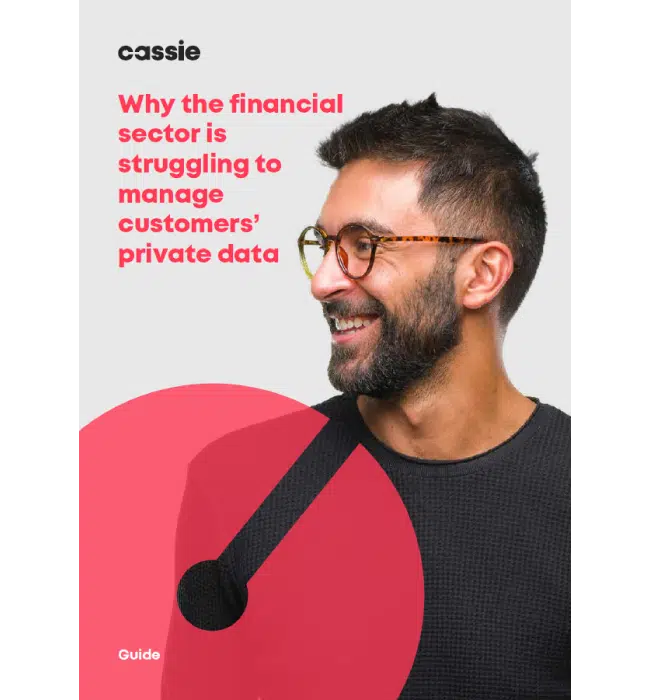Banking on data: Chase is pioneering in-app advertising, but at what cost?
Posted: April 30, 2024
In early April 2024, Chase announced Chase Media Solutions, its new digital media business, amid both marketplace cheers and jeers.
As Chase reports, Chase Media Solutions is designed to leverage the wealth of knowledge related to purchases and transactions that Chase has as a financial institution.
Rather than selling cookie-based targeted ads on a website, Chase will use its deep knowledge of consumer buying habits and preferences to display targeted retailer offers that match an individual’s interests. Essentially, Chase is monetizing its first-party data and moving into walled garden territory.
Do consumers have a choice? How will this benefit Chase? Read on to find out.
Financial data = invaluable as we move into the cookieless future
The financial services industry has long been in possession of incredibly valuable purchasing data. Through data sharing with affiliates, joint marketing agreements, cross-context online advertising, and outright data sharing, banks and credit card companies have worked within a highly regulated environment to successfully monetize their special knowledge.
However, as technology, regulations, and consumer sophistication in privacy have changed over time, traditional affiliate and joint marketing efforts have become increasingly problematic and less lucrative for both financial institutions and their marketing customers.
This development comes at a critical time in digital marketing’s history. Research suggests that customer acquisition costs are increasing at a staggering rate – 222% between 2013 and 2022.
Marketers are looking for cost-effective alternatives, especially given Google’s announcement that it will join Firefox and Safari in phasing out third-party cookies – the engine that has driven targeted online marketing for years.
Combined with privacy laws that require opt-in or opt-out choices regarding third-party advertising cookies and targeted advertising, the resulting decrease in contactable consumers and available cookie data, a looming cookieless future, and rising marketing prices give marketers good reason to consider Chase’s new option.
How will Chase use consumer buying habits and preferences?
Chase will use its deep knowledge about consumer purchasing behavior to present targeted, customized offers from paid advertisers on its platforms. Visitors will only receive paid offers that match their interests.
For example, if a visitor has purchased party balloons on multiple occasions, Chase may present to that visitor a special balloon offer through the platform on behalf of an advertising customer. Other visitors who do not have a balloon buying pattern will not see that offer.
The value proposition is a powerful one for both Chase and marketers. As one news source states, Chase is able to monetize its personal data twice. First, Chase makes money from marketers. Then, Chase also takes a transaction fee for the offer purchase itself.
Marketers may benefit as well. Not only does Chase have incredibly valuable purchasing data on which to base targeted offers, Chase Media Solutions marketing customers will only pay a fee when a consumer uses a deal to make an actual purchase. This will allow marketers to show a direct correlation between marketing dollars and sales revenue, proving the elusive Return on Investment (ROI). It also eliminates the risk of hopeful, but unfruitful, marketing spend.
Is this use of consumer data legal?
From a privacy perspective, the Chase Media Solutions model may be more of a mixed bag. On the positive side, with this solution, Chase is not faced with the need to share personal information with third parties.
Rather, Chase Media Solutions merely presents targeted offers based on what it knows about the individual, and the retailer only gets visibility into the individual when he or she goes through with the deal. In other words, no personal information exchanges hands between third parties in the marketing context – only in the context of an actual sale.
On the other hand, the Chase Media Solutions marketing model may take away the control that consumers have said they want. US State Do Not Sell/Share opt-out requirements, targeted advertising consents, cookie consent rules, and marketing unsubscribe laws have all developed because people want control over their personal data and its use/sharing – consumers, legislators, and regulators alike.
Notably, the launch announcements did not clarify whether consumers can opt out of the data sharing and targeted advertising. This is an ongoing point of contention that Meta is very publicly facing right now (with the Pay or Okay premise whereby users must choose to pay for ad-free use).
With US privacy legislation only continuing to ramp up as well as the pending CFPB 1033 open banking rule, this raises obvious questions around how aware consumers are about how their data is being used. Financial data is one of the most sensitive and complex data pots, with consumers rightfully concerned about how it is managed, and processed and the implications of sharing it with third parties.
The age-old Privacy vs. Personalization debate
68% of consumers would like the ability to control the types of data collected; they want to be able to say no about their personal data being used for secondary purposes and have their wishes respected. People also want to be able to say no to some things and yes to others, and then change their mind later. Granular preference controls can help build trust and enhance engagement.
Additionally, almost half of consumers (48%) say that a lack of personalized content sways them to opt-out from brand communications, with US consumers 25% more likely than those in Europe to say this.
So Chase must balance a very delicate line, of providing relevant ads without encroaching on consumer privacy. The jury is still out on whether personalized ads are helpful or creepy.
However, the Chase Media Solutions model does not hinge on a granularity of consents within context. Rather, its success will depend on what boils down to a yes or no answer from consumers. Either consumers will use Chase products and visit the platform to get suggestions, or they won’t. In this way, Chase has created an all-or-nothing choice that individuals will need to make.
Balancing financial data and user consents
There is no doubt that managing consent is a complicated job. However, it is a worthwhile endeavor, as it allows people the control they want over their data, with all the richness of us as human beings and within the context of our unique situations and relationships.
Given that there are tools to help manage that complexity, this challenging activity can become routine, allowing organizations to shift focus to other consumer needs while still honoring granular preferences.
As David McInerney, Commercial Manager at Cassie, said, “handling consent processes – be it obtaining, storing, verifying, revoking, renewing, or expiring – is a nuanced task requirement strict adherence to industry and regulatory norms. As a specialist CMP provider equipped to manage substantial data volumes in real time, our API-driven solution boasts an impressive capability of handling tens of thousands of transactions per second allowing businesses to navigate through their intricate consent use cases.”
It will be interesting to see how consumers vote regarding Chase Media Solutions. Will people flock to the platform to see and select customized, exclusive deals based on purchasing history? Or will people stay away from the all-or-nothing platform and instead take the time to express their preferences on a case-by-case basis with companies they trust?
Will people accept making purchases through Chase, knowing that special marketing algorithms are sifting through their behavioral data for targeted marketing purposes, or will people vote with their wallets and take their shopping, banking, and credit card business elsewhere? Only time – and customer decisions – will tell.

Read about the challenges facing the financial sector with customer data management
Read our Why the financial sector is struggling to manage customers’ private data guide to understand the biggest challenges banking and financial institutions face around data privacy.
In this guide, you will learn:
- Why do customers feel they have no control over their data
- Why banks and financial institutions aren’t fully complying with the data privacy laws that affect them
- What steps can banks and financial institutions take to overcome these challenges.

